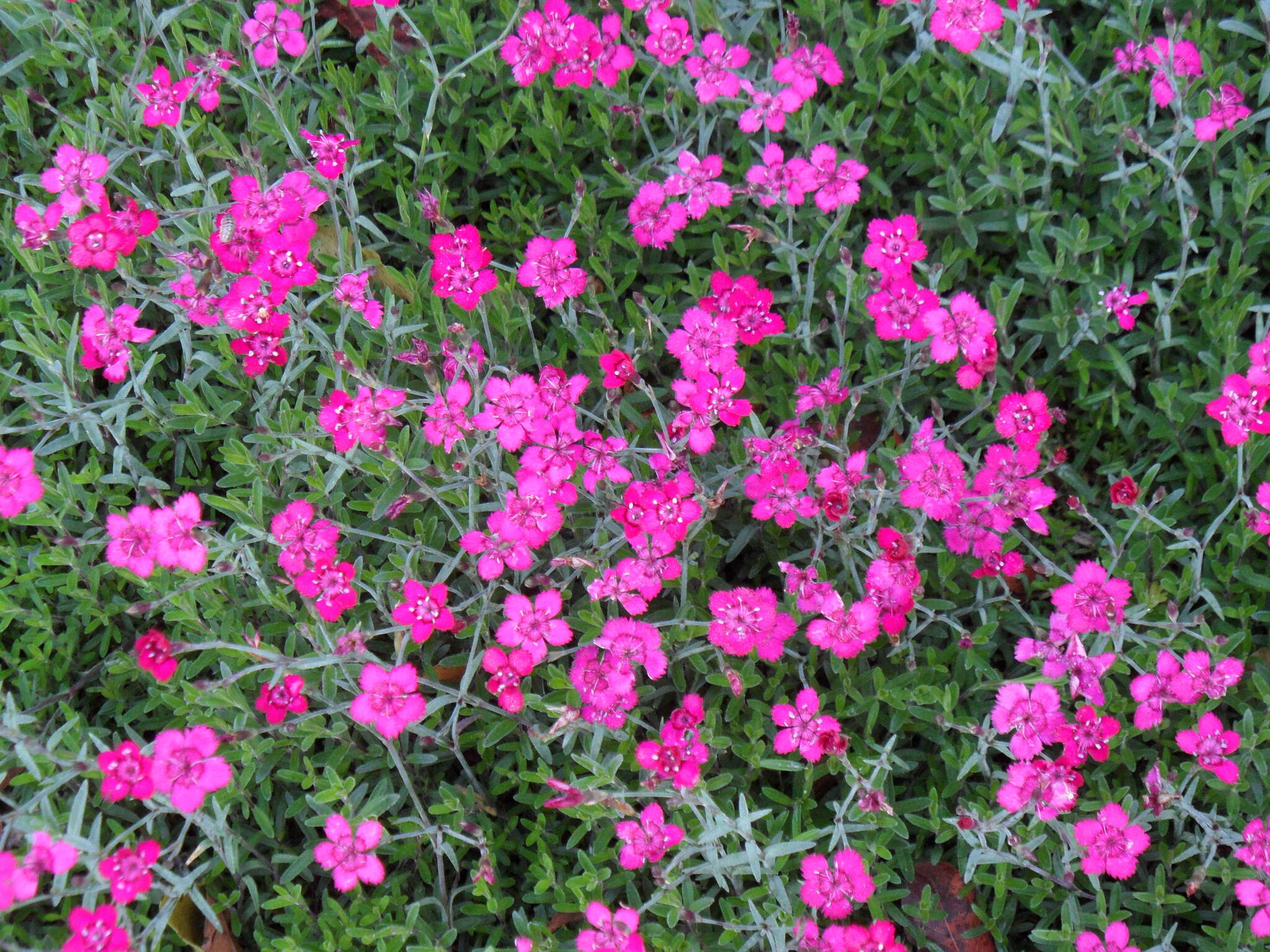
Anne Glancy & Roger Spencer
Greek dios—of Zeus, anthos—flower, the Divine flower.
Herbs, rarely shrubs. Leaves opposite, mostly linear, entire, often waxy blue. Stems often swollen and brittle at the joints. Flowers single or in clusters with few to many flowers. Sepals usually in a cylinder enclosed in 1-3 bracts. Petals free with the base narrowed and the tip variously cut or toothed, occasionally bearded at the mouth. Stamens 10. Styles 2; mostly in summer. Fruit a capsule with 4 teeth.
Many species have been long in cultivation, most notably the carnations (D. caryophyllus), and pinks (D. plumarius and others) which, with a complex breeding background, can generally only be assigned a cultivar name. The range of cultivars, (about 30 000 are listed and there would be several hundred in Australia), is too extensive to describe in detail here; specialist growers are best approached for this information. Almost all Dianthus are grown as cultivars and the species are of interest to specialist growers only. Most of the cultivated carnations have double flowers. Numerous Dianthus species were grown at Royal Botanic Gardens Victoria (Melbourne Gardens), in the Anderson Street rockery near the current Rose Bed in the period 1903-07 and are well represented in the horticultural herbarium.
In Australia cultivars would have been introduced largely from the UK where, in the early 19th century the pinks enjoyed great popularity as breeders attempted to develop round, not serrated, edges to the petals. A number of flower types were produced by breeding in the UK and several of these are still represented in Australia. Early groups included the bizarres, flakes and picotees which were multicoloured. Other groups include the border carnations, which are robust annuals or evergreen perennials, the perpetual flowering carnations which are chiefly florist or cut flowers; there are others but Dianthus has never seen the following in Australia that has occurred elsewhere.
Carnations have been grown commercially for many years as florists' flowers.
Flowers often fragrant; sepals surrounded by bracts (epicalyx); styles 2.
About 300 species from Eurasia but extending to the Arctic, N America and montane Africa.
Ingwersen (1949, 1979), Whitehead (1956), Genders (1962), Leslie (1983), Bird (1994).
Most Dianthus grown in Australian gardens are cultivars produced from a long process of selection and hybridisation.
The key to species should be used as a guide only to the more rarely grown species and full descriptions should be consulted. Only the commonly grown species are described in the text. Key modified from European Garden Flora.
Source: (1997). Dianthus. In: . Horticultural Flora of South-eastern Australia. Volume 2. Flowering plants. Dicotyledons. Part 1. The identification of garden and cultivated plants. University of New South Wales Press.

Flowers white with a crimson eye, petals with a toothed edge. Originated Allwood, uk, 1930.
(d. plumarius × d. caryophyllus) pbr app. no. 94/180.
Flowers pink with red ring at the base, prolific, scented. Originated Allwood, uk, pre 1954.
Pbr app. no. 94/181.
Flowers ruby red, almost black with pink edge. Originated f.r. Mc Quown, uk, pre 1944.
Flowers white with pink eye and laced ruby red. Originated f.r. McQuown, uk, 1946.
Flowers double, deep pinkish red with dark centre.
Flowers double white, fringed, also in double pink, clove-scented. Old-fashioned pink. Originated j. Sinkins, uk, 1868.
A range of scented plants about 20 cm tall in a various colours bred by Dr Keith Hammett.
Flowers mauve, double, scented.
Flowers single with neat toothed petals laced with magenta-purple on a white ground. Originated uk in 1600s.
Flowers dark red.
Semi-double, pink, petals deeply fringed.